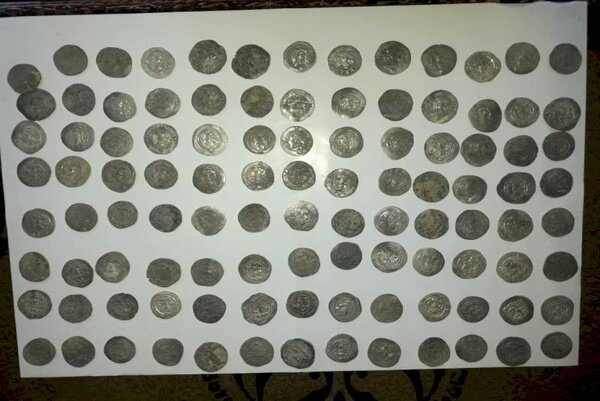Tens of Sassanid coins recovered in central Iran

TEHRAN – Iranian authorities have recently confiscated some 350 ancient coins, which were illegally kept in a place in the central province of Markazi, the provincial tourism chief has said.
The coins, which are made of silver, are estimated to date from the Sassanid era (224 CE–651), Mostafa Marzban explained on Wednesday.
The historical coins have been given to the province’s Cultural Heritage, Tourism and Handicrafts Department for further investigation and better preservation, the official added.
In about 220 CE the Sasanian dynasty of Iran introduced the concept of thin flan coins, issues that were struck in relief on both sides. In order not to produce intolerable stresses in the dies, since the thinner the material the more force necessary to make it flow into the recesses of the die’s design, the depth of relief on such coins was of necessity much shallower than with earlier currency.
Such techniques spread by way of Byzantium to northern Europe, where the emperor Charlemagne struck thin flan deniers (small silver coins), or pennies, which became characteristic of both his own and neighboring kingdoms.
In many ways, Iran under the Sassanian rule witnessed tremendous achievements of Persian civilization. Experts say that the art and architecture of the nation experienced a general renaissance during Sassanid rule.
In that era, crafts such as metalwork and gem-engraving grew highly sophisticated, as scholarship was encouraged by the state; many works from both the East and West were translated into Pahlavi, the official language of the Sassanians.
Markazi province is considered the industrial capital of the country. It is rich in natural, historical, cultural, and religious attractions.
Hand-woven carpets and kilims, made in its cities including Farahan, Sarugh, Lilivan, Senejan, and Vafs are known internationally.
ABU/MG
Leave a Comment